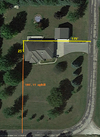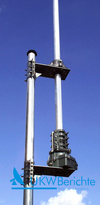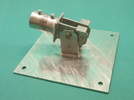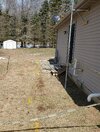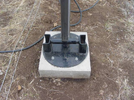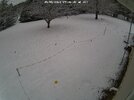I am replacing the Maco V58 on a 30 foot pole with a 40 foot tower with manual winch, Maco M104C mounted horizontally and the V58 above it without the groundplane radials. The antenna arrived yesterday.
Now all that is left is:
After listing this general task list, the V58 is not working too bad at all! I have no specific deadline in mind, just whatever can reasonably be accomplished given all the things that can intercede.
I have no specific deadline in mind, just whatever can reasonably be accomplished given all the things that can intercede.
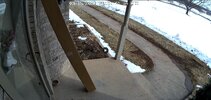
Now all that is left is:
- Snow to melt and ground to firm up.
- Get Digger's Hotline person to come out and verify no services run where the main tower hole will be dug. I am 99 percent certain we are okay because the same area was excavated 5 years ago when we had an egress window installed as part of having our basement finished. But if there is a problem, stop until a plan B is devised.
- Purchase used 40' Rohn 25G tower. I have one located a few hour drive away, just waiting for the seller and I to be able to arrange the pickup date/time. And hope it is in as good condition as seller states. If not, I also know where to find a 40 foot tall US Tower 15-40 a few hours away too. If I end up buying the 15-40 instead it has the advantage of no guy wires, anchors, guy wire bracket) but requires a bigger hole and larger concrete pour (should only increase cost a bit due to less-than-full concrete delivery surcharge..
- Purchase tilting base plate, wall mounting bracket, guy wire rope, 10' schedule 40 or 80 aluminum mast (not sure what OD yet), guy wire base posts.
- Purchase or make a guy wire bracket for the tower.
- Purchase Yaesu G-800DXA rotor, rotator plate and controller cable.
- Test rotator to make sure it works.
- Purchase (and test) more RG-213 coax, any additional grounding supplies.
- Take down existing antenna and pole.
- Dig 3'x3'x4' or so hole for tower base. I do not plan on doing this digging myself. Age has tempered my male ego.
- Dig/drill one or two 12" hole for pipes for guy wire bases. See above about digging this myself.
- Fill big-a$$ holes with several yards of concrete, position anchor rods/anchor pipes and post for winch. See above about age/ego.
- Install 3 to 5 guy wire anchor points on appropriate roof perimeter locations.
- Temporarily install one tower section to get exact placement for required mounting bracket (the highest I can install the mounting bracket is about 10' due to shape of roof), then install mounting bracket and remove tower section.
- Assemble tower, do a test run of standing it up by itself to make sure the winch works as expected, then lower.
- Install rotor plate, rotor, mast.
- Assemble and tune M104C and V58 on ground, probably about 10' up is most I can do.
- Install M104C and V58 on mast.
- Run coax and rotator control cables.
- Stand up tower, finish grounding/running stuff inside, etc.
After listing this general task list, the V58 is not working too bad at all!



